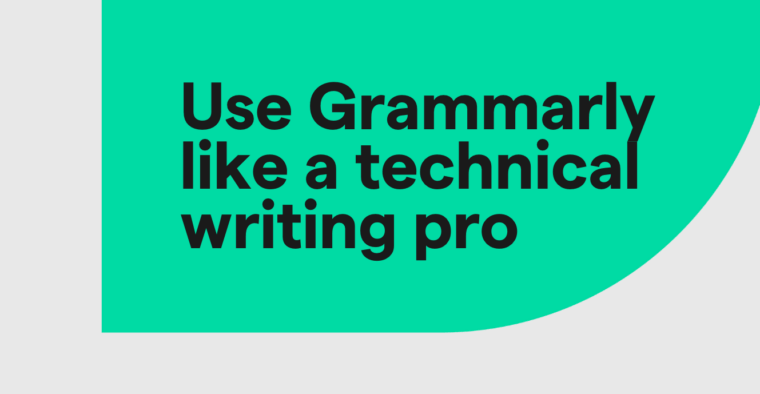
In business, a lot of information is conveyed through lengthy, comprehensive documents like white papers, business plans, case studies, and research reports. A lot of money and other resource investments are on the line in most business decisions, so leaders and investors need to understand every factor and variable involved before making those decisions.
But the business world tends to move quickly, and that means professionals often don’t have the time to read extensive reports before starting projects or making decisions. This is where the executive summary comes in. An executive summary is a condensed version of a longer business document that enables readers to absorb the same information more quickly.
What is an executive summary?
An executive summary is the abridged form of a business document. Although it can be tempting to compare an executive summary to an abstract for an academic report or paper, there is a key difference between these two types of document: An abstract is a synopsis of a report or paper that sums up the document, while an executive summary is a shortened version that still hits all the main document’s key points.
An executive summary gives readers, often business leaders, investors, partners, or purchasers, a sneak peek of the full contents so they can make decisions about how to proceed with the company or proposal. In this way, it’s similar to an elevator pitch, except it’s representing a piece of writing rather than an individual’s goals.
What types of documents or projects require an executive summary?
Often, executive summaries are associated with business plans. When an executive summary is part of a business plan, its purpose is largely to engage prospective investors and buyers.
But a business plan isn’t the only place you might find an executive summary. They’re also used with:
- Market surveys
- Research documents
- Business proposals
- Project plans
- Project proposals
Sections of an executive summary
Generally, an executive summary for a business plan includes the following sections:
Table of contents
The table of contents lists the sections included in the main document. This gives an even more concise overview of the document and the executive summary itself.
Company background/About
In the company background/about section, the reader learns about the company’s mission statement, market position, niche, and goals. In some cases, this section also includes a brief history of the company. This section provides context for the goals and strategies explained in the rest of the executive summary and the plan as a whole.
Market opportunities
This section discusses the opportunities present in the current market. It may present these opportunities as a problem to solve or as a need that can be fulfilled.
Solution
After introducing the opportunities, problems, or needs present in the current market, the solution section discusses how the company can capitalize on them.
Competitive advantages
This section discusses how the business is uniquely positioned to succeed in reaching its goals through its plans.
Financial highlights
The financial highlights section includes any financial insights relevant to the plan, such as current profit levels and expenses, and any funding the company hopes to secure.
These sections can vary somewhat depending on the document being summarized. For example, an executive summary for a project proposal might include a section that analyzes the state of the company’s industry as well as its specific market. It might also include a section that justifies the proposed course of action, citing internal concerns and how it fits into the company’s overall strategy.
Despite variations in their sections and content, every executive summary has the same goal: to provide a concise, informative look at the document so readers can engage with the company or plan more easily.
How to write an executive summary
Create an outline
With just about any kind of writing, the best way to start is by creating an outline. An outline achieves a few goals:
- Organizes the key points into a coherent narrative
- Makes it easy to understand which points to include and which to omit
- Gives you a road map to follow as you write
Your outline serves as a useful tool when you prewrite. Ideally, the executive summary is the part of your document you write last, since you can’t summarize the full document if you don’t yet have a full document. With the full document in hand, jot down the key sections you need to include in your executive summary and the points to hit in each section. By doing this, you’re creating an outline after you’ve written (or been given) the full document and before you write the executive summary.
State and define the purpose or problem
As you write, remember your executive summary’s purpose. This should drive everything you write, including how you frame the problem the project aims to solve and where you include relevant statistics to support the proposed solution.
When writing about the purpose or problem the plan solves, give as much context as necessary without overexplaining. Remember, your readers will get the full story from the main document. However, the executive summary should give them a strong enough grasp of the problem that they aren’t surprised by anything they read in the full document.
Solution or next steps
After clearly defining the purpose or problem, explain the solution to that problem or the next steps outlined in your strategy. Similar to the section about the document’s purpose, this section should be comprehensive enough to give the reader a solid understanding of the solution without getting bogged down with lengthy explanations.
Conclusion
An executive summary’s conclusion is, in a lot of ways, just like any other conclusion. It reiterates the key points you made in the executive summary’s body sections, answers any questions the reader might have, and leaves them with a clear sense of what to do next (which is usually to read the full document).
How to format an executive summary
An executive summary doesn’t need to stick to a specific length or word count. Usually, they’re one to two pages long. However, achieving the goal—concisely explaining the document’s main points in a way that’s both authentic and engaging—is far more important than fitting a specific format.
Because an executive summary is part of a business document, it’s important to use a professional tone. That said, keep the jargon to a minimum—many of your executive summary’s readers, such as prospective buyers, might not be in your industry and will understand the document better if you use plain language. Use your discretion, though—if you know the document will be shared and read only internally, jargon might not be a concern.
Executive summary vs. an abstract
An abstract is a short overview of an academic document. It doesn’t answer everything; it acts as a teaser by giving the reader just enough information to make them start formulating questions and anticipate the answers they’ll find in the main document. In addition to this, an abstract helps the reader quickly determine whether the document contains the information they’re looking for. When the reader is doing research, abstracts save them a lot of time.
An executive summary, in contrast, provides a condensed version of the main document. Its goal isn’t to get the reader’s mind to formulate questions; it’s to give a full summary so they know what to expect from the main document.
Executive summary vs. project plan
A project plan is a blueprint for a project. It’s similar to an outline in that it maps the project’s big-picture elements, such as goals, budget, milestones, stakeholders, and success metrics. An executive summary is less technical than a project plan. It offers a rundown of the project’s most important information but doesn’t go as deep with statistics and figures.
Executive summary FAQs
What is an executive summary?
An executive summary is a condensed version of a longer business document. Writing a clear and informative executive summary doesn’t have to be daunting. Grammarly’s AI executive summary tool helps you draft a compelling summary efficiently.
What is its purpose?
The purpose of an executive summary is to provide a quick look at the content in a longer business document. This makes it easier for readers, who may be business leaders, prospective partners and vendors, or investors, to understand and engage with the full document.
What kind of documents or projects require an executive summary?
- Business plans
- Project proposals
- Market surveys
- Business proposals
- Research documents
- Project plans
What are the sections of an executive summary?
Each executive summary is unique, but they generally include the following sections:
- Introduction
- Table of contents
- Company background/About
- Market opportunity
- Solution
- Competitive advantages
- Financial highlights






